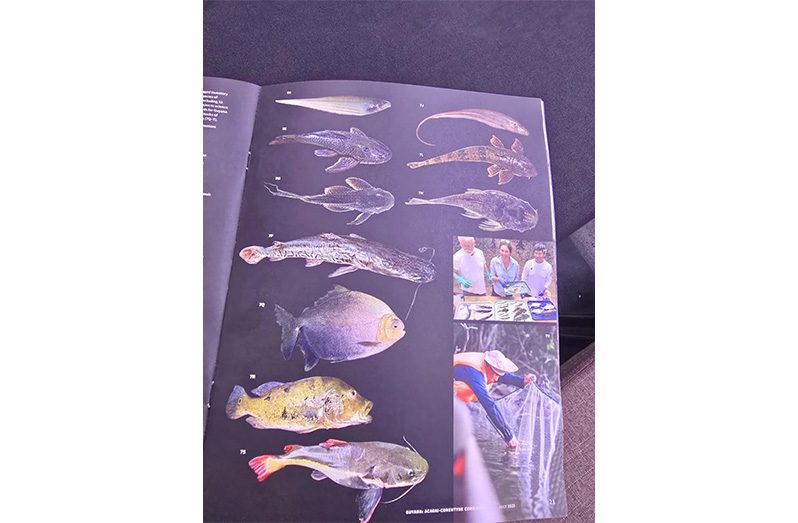THIRTY-THREE new species of fish were discovered in the Acarai-Corentyne corridor in Guyana, a country already rich in biodiversity, during a rapid inventory by a team of experts in 2024.
Among the newly discovered fish species are the Potamotrygon boesemani, Microglanis sp, Bryconops sp, Eigenmannia macuxi, Myleus pacu, Cichla ocellaris, Leporinus cf. fasciatus, Metaloricaria nijsseni, Pseudoplatystoma cf. reticulatum, Phractocephalus hemioliopterus, Pseudacanthicus fordii and Sternopygus astrabes.
Senior Conservation Ecologist at the Chicago Field Museum (CFM), Dr Lesley de Souza, highlighted the findings during a panel discussion at the Global Biodiversity Alliance Summit on Thursday.
“Most of them [fish] are known locally. Because this area had been poorly explored and was new to scientific research, we were able to add 40 new records of fishes to the fish list of Guyana. I have never seen piranhas as big as I saw in this area,” Dr de Souza said.
Dr de Souza explained that 50 per cent of the birds in Guyana were found within the border, adding that, “There was a new record of a bird [Speckled Spinetail] in Guyana.”
She further revealed that 10 million emergent trees were collected, while two new species of amphibians were also discovered during the expedition.
“[A total of] 400 jaguars are estimated to be in this corridor. This is a very important place for mammals…The highlight for me was working with the local experts on collecting the fish we collected. They worked with all the teams,” she revealed.
In 2024, a team of over 50 experts that included Dr de Souza embarked on a month-long expedition in one of the world’s most remote forests, located in the south-eastern part of Guyana, to conduct a rapid inventory.
The expedition was a partnership between the Protected Areas Commission (PAC), the Field Museum of Natural History, the University of Guyana and other local institutions. The team included experts in geology, botany, zoology, soils, and local ecology.
The expedition’s findings support the government’s plan to sustain ecosystem services, increase climate resilience and create replicable conservation models.
The Executive Director of the Environmental Protection Agency (EPA) Kemraj Parsram chaired the session, which explored cutting-edge scientific and digital tools for tracking and measuring biodiversity and evaluating the impact of conservation.
During the panel discussion, Scientist Engineer at the Indian Space Research Organisation (ISRO) Dr Sudhakar Chintala and Head of Partnerships at Yale Centre for Biodiversity and Global Change Dr Claire Hoffmann, highlighted how data-driven methods are transforming biodiversity tracking into useful information for practitioners and decision-makers to meet the 30 by 30 biodiversity goal. (DPI)



.jpg)








